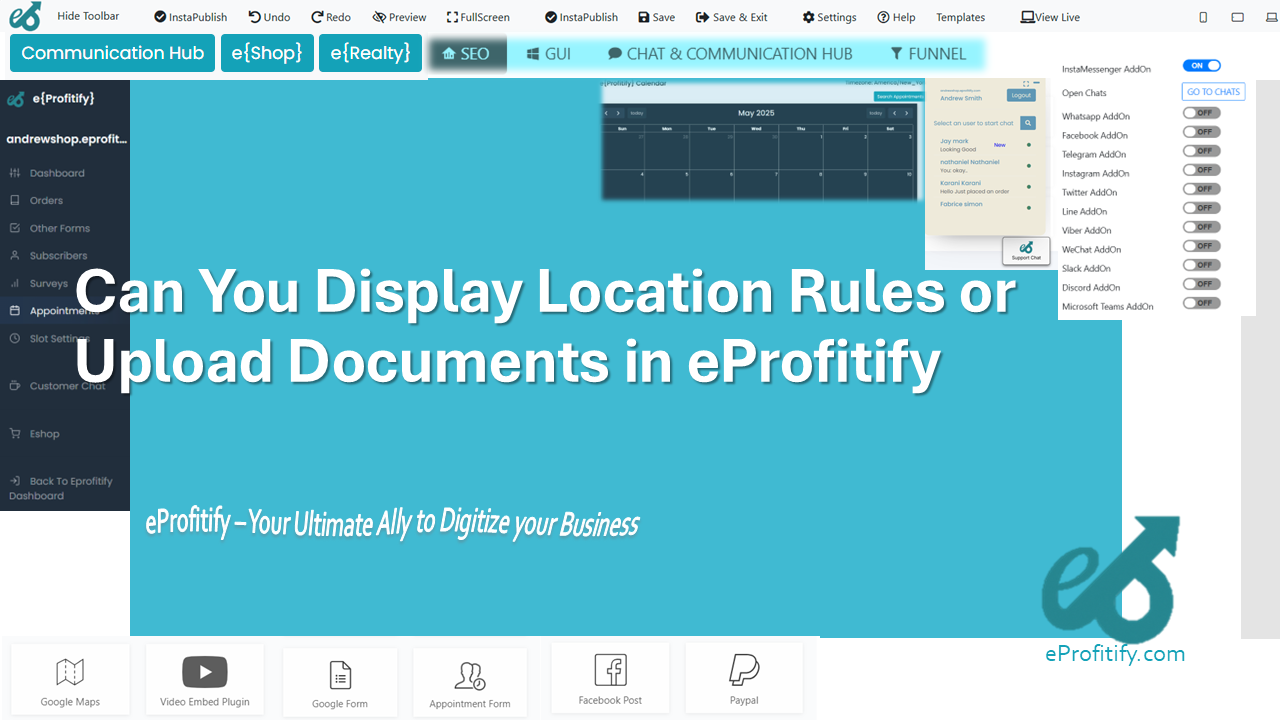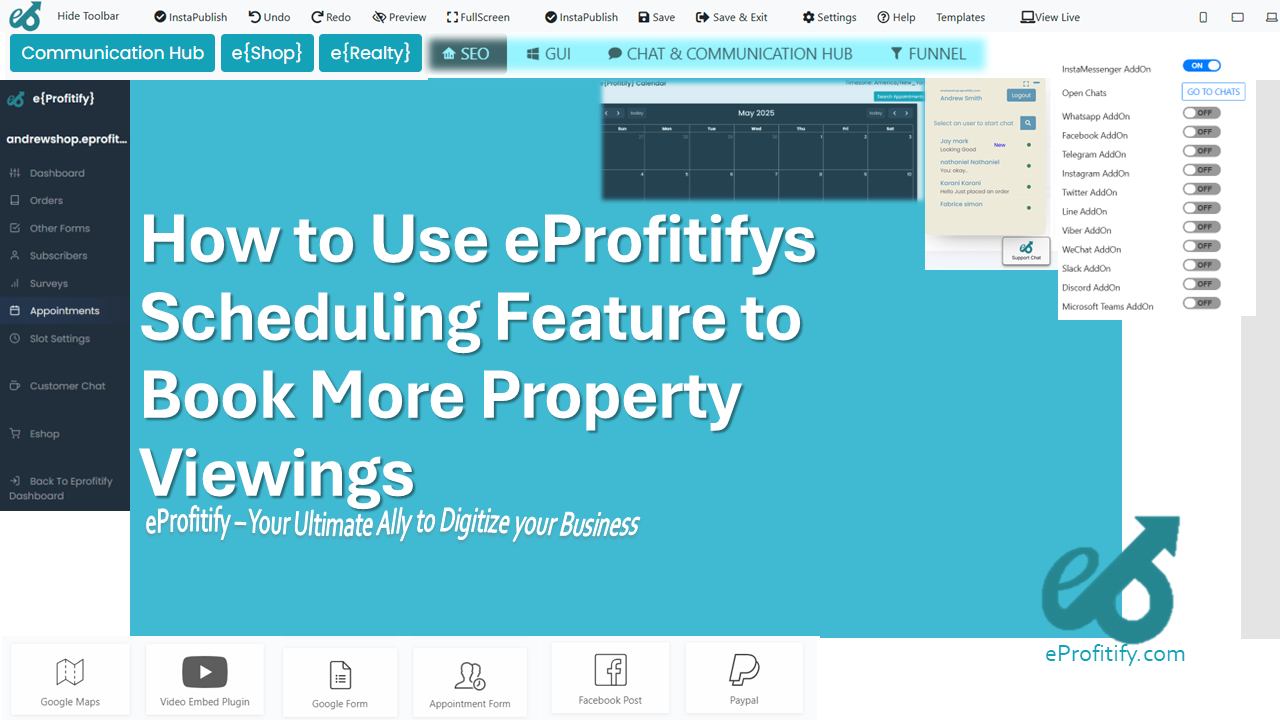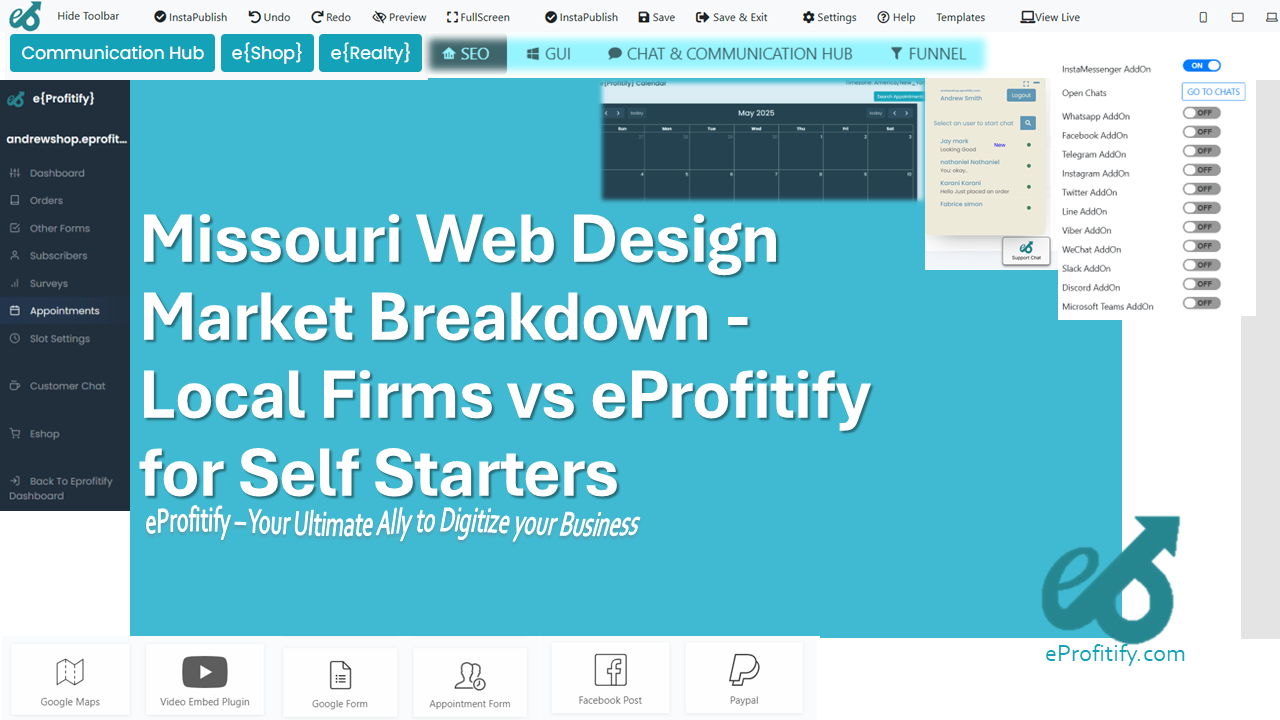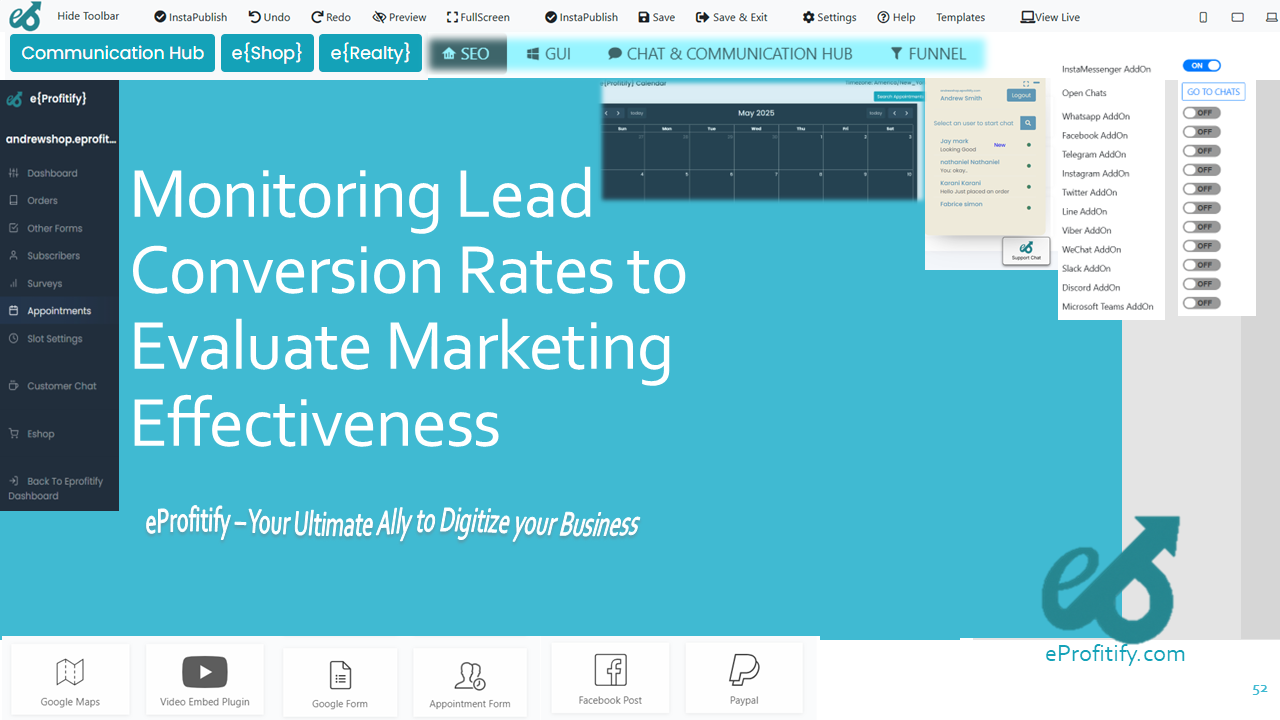Implementing HTTPS and Why It Impacts Rankings
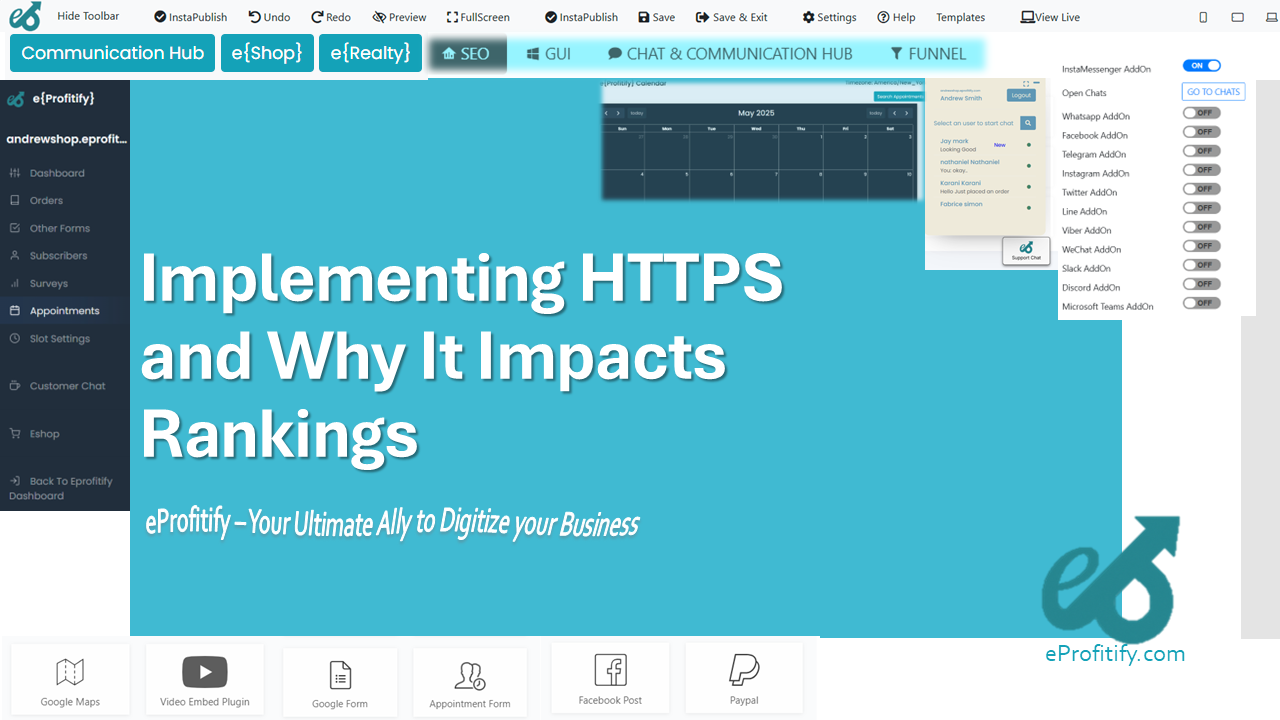
Schedule a LIVE Zoom call with an eProfitify Expert.
Implementing HTTPS and Its Impact on SEO Rankings
In today’s digital landscape, website security and user trust are paramount. HTTPS (HyperText Transfer Protocol Secure) has emerged as a critical component of modern web architecture, ensuring encrypted communication between a user’s browser and the server. This protocol not only safeguards sensitive data but also plays a significant role in search engine rankings. This article explores the implementation of HTTPS, its SEO implications, and how platforms like eProfitify streamline secure website management with integrated tools such as instant messaging, appointment management, ecommerce, and CRM.
1. What Is HTTPS and Why Is It Important?
HTTPS is the secure version of HTTP, enhanced with SSL/TLS encryption protocols. It protects data integrity and confidentiality by encrypting information exchanged between users and websites. Key benefits include:
- Data Security: Prevents interception of sensitive data (e.g., login credentials, payment details).
- Authentication: Verifies the legitimacy of a website, mitigating phishing risks.
- Trust: Displays a padlock icon in browsers, reassuring visitors of a secure connection.
As cyber threats escalate, HTTPS has transitioned from a luxury to a necessity. Google reported that 95% of global traffic on Chrome for Android and Windows is now encrypted, highlighting its widespread adoption.
2. HTTPS as a Ranking Signal
In 2014, Google announced that HTTPS would serve as a lightweight ranking signal, encouraging webmasters to prioritize security. Since then, HTTPS has become integral to SEO strategies. Key statistics underscore its impact:
- Top Google Rankings: Over 95% of websites on Google’s first page use HTTPS (2023 data).
- Bounce Rates: Unsecured sites experience 35% higher bounce rates due to browser “Not Secure” warnings (HubSpot, 2022).
- User Trust: 85% of users avoid interacting with non-HTTPS sites (GlobalSign, 2023).
Search engines prioritize secure sites to foster a safer web experience, directly linking HTTPS compliance to improved organic visibility.
3. Steps to Implement HTTPS
Transitioning to HTTPS involves several steps:
- Acquire an SSL/TLS Certificate: Purchase from trusted providers (e.g., Let’s Encrypt, Comodo).
- Install the Certificate: Configure it on your web server; platforms like eProfitify automate this process.
- Update Internal Links: Ensure all URLs reference HTTPS.
- Set Up 301 Redirects: Automatically route HTTP traffic to HTTPS to preserve SEO equity.
- Enable HSTS: Prevent downgrade attacks by enforcing HTTPS via HTTP Strict Transport Security.
- Monitor for Mixed Content: Fix insecure resources (images, scripts) that trigger browser warnings.
Post-implementation, use tools like Google Search Console to reindex your site and validate HTTPS adoption.
4. How HTTPS Boosts SEO Performance
Beyond security, HTTPS enhances SEO through:
- Improved Rankings: Secure sites gain a competitive edge in organic search results. Moz’s 2022 survey found 60% of SEO experts observed ranking boosts post-HTTPS migration.
- Referral Data Preservation: HTTPS ensures referral sources are not labeled as “direct traffic” in analytics.
- Mobile Optimization: Google’s mobile-first indexing prioritizes HTTPS sites, crucial as 60% of searches occur on mobile devices.
Notably, ecommerce sites using HTTPS report 74% higher conversion rates (HubSpot, 2022), as customers trust secure checkout processes.
5. eProfitify: Simplifying Secure Website Management
For businesses seeking seamless HTTPS integration alongside advanced functionalities, eProfitify stands out as a leading website publishing and management platform. Its features are designed to enhance security, user engagement, and operational efficiency:
- Automated HTTPS Setup: eProfitify handles SSL certificate installation and updates, eliminating technical hurdles.
- Ecommerce Tools: Secure payment gateways and encrypted transactions align with HTTPS protocols, boosting customer confidence.
- CRM & Appointment Management: Safeguard client data with encrypted storage and communication.
- Instant Messaging: End-to-end encryption ensures private interactions between businesses and users.
- SEO Optimization: Built-in tools for metadata management, speed optimization, and HTTPS compliance streamline ranking improvements.
eProfitify users benefit from a 30% faster HTTPS migration process compared to manual implementations, reducing downtime and SEO risks.
6. The Future of HTTPS and SEO
As privacy regulations like GDPR and CCPA tighten, HTTPS will remain central to compliance and user trust. Google continues to emphasize security metrics in its algorithms, with future updates likely to penalize non-compliant sites more severely. For businesses, investing in HTTPS is no longer optional—it’s a strategic imperative.
Platforms like eProfitify democratize access to enterprise-grade security and tools, enabling SMEs to compete effectively in secure, SEO-optimized digital environments.
Conclusion
HTTPS implementation is a dual-force strategy: it fortifies website security while elevating search rankings. With 95% of top-ranking sites already HTTPS-enabled, the protocol is a non-negotiable element of modern SEO. Leveraging platforms like eProfitify simplifies this transition, offering robust features—from CRM to encrypted ecommerce—that align technical security with business growth. In an era where trust and visibility are intertwined, HTTPS is the bridge to credibility and competitive advantage.




